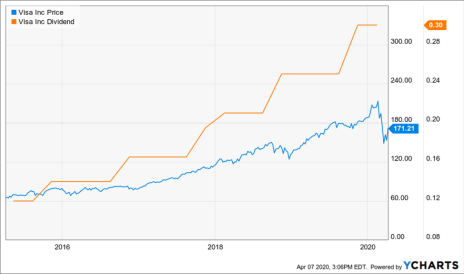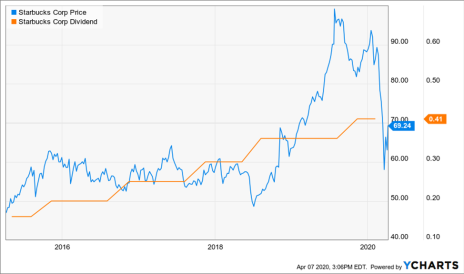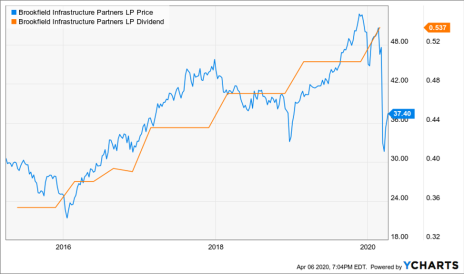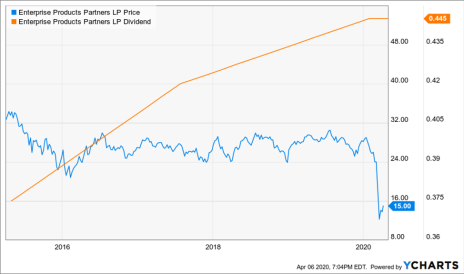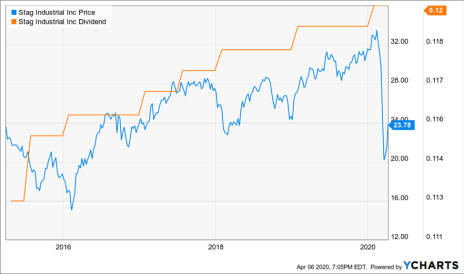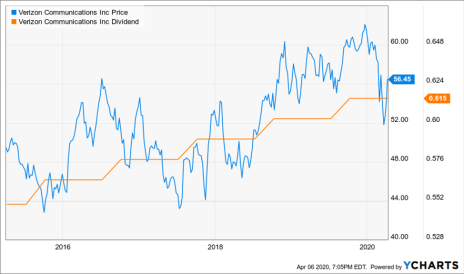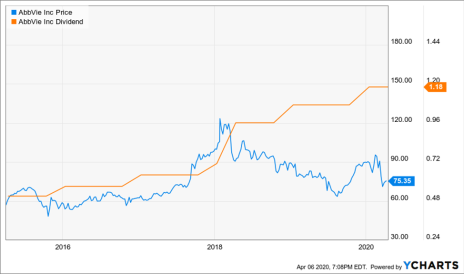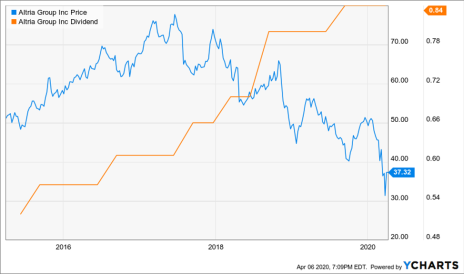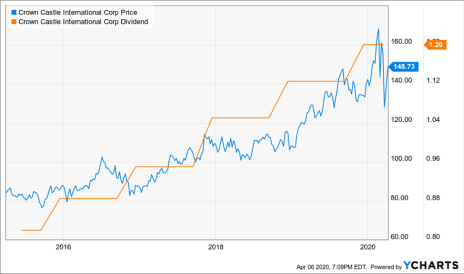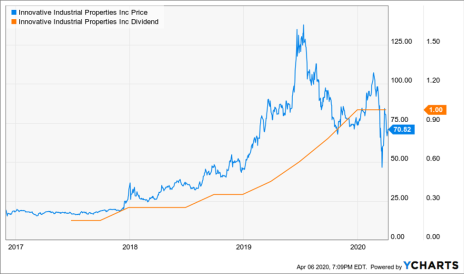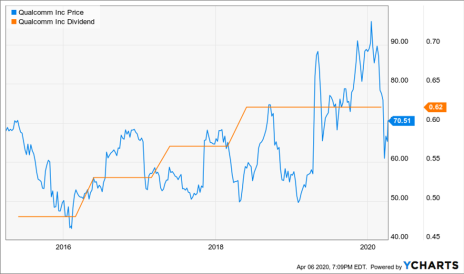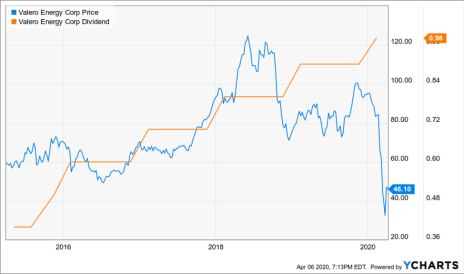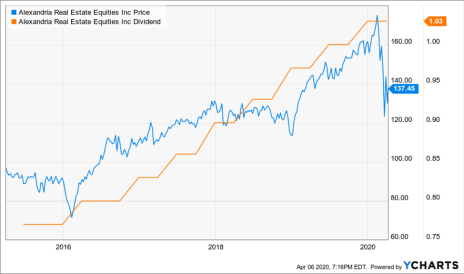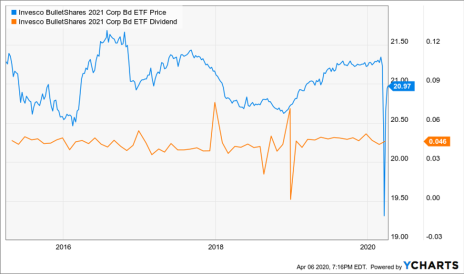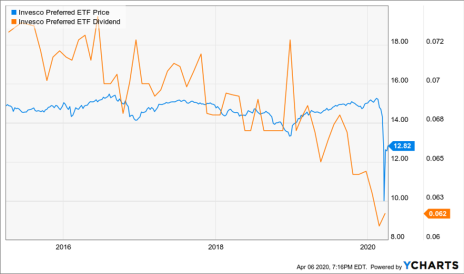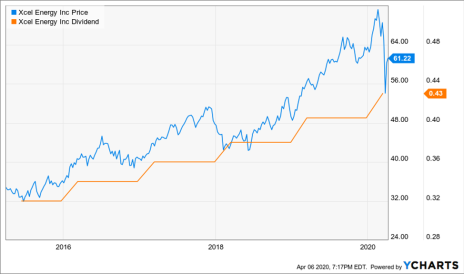After a better than 30% plunge at record speed, the market has staged an epic rally from the bottom. The S&P 500 has moved more than 20% higher from the lows in late March. It is likely sensing an end to the economic shutdown sooner rather than later.
That’s good news, and the market usually gets it right. But even if the economy opens back up in May and June, there is a good chance of more trouble ahead. Terrible earnings and economic reports will come and consumers will be wounded for a while.
While I believe the economy and the markets will recover, there is a good chance of another down leg in the market. In this issue, I seek to take advantage of that possibility by targeting great companies to buy and below current prices. These are fantastic companies to own that are only ever cheap in bear markets like this.
The market will come back, but probably not yet. Taking advantage of another down move is a fantastic way to profit from the market’s eventual recovery.
Cabot Dividend Investor 420
[premium_html_toc post_id="202379"]
Hope for the Bull But Prepare for the Bear
Are you having any fun yet? I’ll say one thing about this market—it’s not boring.
After plunging nearly 34% from the high at all-time-record speed, the market has staged an epic rally. The S&P 500 has moved more than 23% higher from the bottom hit on March 23. The index is now down 19% from the high, recouping nearly half of the losses.
What’s next? Is it time to step in and buy stocks on the cheap before the market runs away and the opportunity is lost? Is this just a bear market rally? Should you save your dry powder for the next move lower? These are the questions I will try to answer in this issue.
Here’s what I think is going on.
Markets anticipate. They tend to move ahead of the actual events on the ground. For example, it is common for the market to start to turn south ahead of a recession before the economy actually starts tanking and move higher before the economy bottoms. I believe a similar dynamic is at play now. The market smells an end to this crisis sooner rather than later.
The mandatory stay-at-home orders have caused the greatest economic disruption that we have seen in our lifetimes. In a regular recession, some companies go out of business and people cut back on spending. But it is nothing like the massive business closures and disruption of economic activity that we’re seeing now. This is Great Depression-level stuff.
Of course, this should be temporary. And it’s self-inflicted. The economy didn’t break on its own. Government restrictions caused this crisis, and the removal of those restrictions can revive the economy. As I mentioned in past issues, it is vital that the economy restarts sooner rather than later.
If businesses start to reopen and people go back to work in May and June, the relatively short time frame of the disruption combined with the Federal stimulus can position the economy for a strong recovery in the second half of the year. But if the economy remains shut down for much longer, it could break in a way that will take it a long time to recover, and the market will make a new bottom. The stakes are high.
The news is getting much better. Reports have been coming in that the virus is not nearly as widespread as anticipated, and the number of cases is leveling off and peaking sooner than anticipated, as is the death toll. On Monday, the CDC Director predicted that the death toll from the virus will be “much, much, much lower” than models projected.
That’s great news on all fronts. And it validates the market’s optimism.
What to Do Now
Let me share the general philosophy that underlies my approach to this newsletter and portfolio. I’m an optimist. I believe in this country and this economy. We will beat this thing, and come back stronger than ever. I believe that the price of the stocks in this portfolio and elsewhere will be significantly higher in the not-too-distant future.
That said, I am still cautious at this particular point in time. It is likely that we’re not out of the woods yet.
The market is anticipating a sooner-rather-than-later recovery. There are two things to realize about the market. One, it usually gets it right. And two, on rare occasions when it gets it wrong, it doesn’t take it well. But even if the economy restarts sooner than expected, there is still trouble ahead.
The main problem is the consumer. Many millions of Americans are unemployed during this crisis. Even when they trickle back to work, it will take time to recover from the financial harm caused by months of unemployment. It will also take time for them to regain the confidence they had months ago.
Consumers account for 70% of GDP. It’s hard to see how the market returns to the old highs before the consumer is back on track, or at least on the way there.
In the meantime, earnings for many companies and upcoming economic numbers will be hideously bad. The market won’t like that. It’s also true that bear markets and crisis prompt the nabobs of negativism to come out of the woodwork. There will be a torrent of analysts and banks and commentators predicting a Great Recession or even a depression. Gloom and doom is big business. You’ll see more of it.
Of course, markets tend to be confounding and do what few expect. It could be that the market rallies from here and never looks back. In that case, this portfolio will have missed a great opportunity to buy cheap. But there will still be opportunities going forward to get stocks at very good prices, and you’ll be assuaged by the fact that your existing holdings spring back faster.
But if I’m right and there is more trouble ahead for the market, we’ll be ready for it. In this issue I highlight two fantastic stocks at below current market prices. Targeting stocks at below market prices with a “buy order” is a great way to prepare for a down market away from the emotion of the moment, when you’re less likely to pull the trigger.
In terms of the existing portfolio, I’m only targeting four stocks to buy right now. The rest are still rated HOLD. These are the stocks of companies with businesses that are still thriving through the crisis, either despite the crisis or because of it. The companies include Healthcare giant AbbVie (ABBV), infrastructure partnership Brookfield Infrastructure Partners (BIP), 5G cell tower REIT Crown Castle (CCI), and new addition to the BUY list this week, Verizon (VZ).
These stocks are great to hold for income should the crisis and bear market drag on. They are also selling at cheap prices and are positioned to thrive in the post-coronavirus market as well.
Featured STOCKS
Most stocks, even the very best ones, become cheap from time to time. Market sectors go in and out of favor. Certain industries are vulnerable to the economic cycle. And problems peculiar to an individual company can cause the price to fall. But certain companies are only ever cheap in a bear market like this. I target two of them below.
As I mentioned, targeting great stocks at below-market prices with a “buy order” is the cool and rational calm away from a falling market is a great way to get stocks on the cheap. It’s hard to step in during a falling market and buy something when your emotions are telling you to run the other way.
It’s a strategy I have used very successfully in the past. But I will caution you about two things. One is that you will cringe when the order goes off. You’ll probably think you should have taken the order off and you slacked. And two, the stock price will most likely continue to go lower from where you buy it. It’s highly unlikely that you will get the stock at the ultimate bottom. Know these things going in.
It’s also possible that the stocks will never hit the targeted price. That’s okay. I’ll reevaluate later if that’s the case. This is a chance to get the stocks at a cheap price, not a guarantee.
Buying great stocks at discounted prices has proven to be a winning strategy over time. Since 1926, the average bear market has returned -38% and the average bull market has returned 336%. In the last 94 years, it has been a bull market 86% of the time. Bear markets present great opportunities to get ahead of the next bull market, but only if you take advantage.
Visa (V)
Yield 0.80%
Visa is a global payments technology company that provides a digital currency instead of cash and checks to individuals and business in more than 200 countries and in over 160 currencies. It is the largest payment processor in the world. It processed over $9 trillion in 2019 and its systems can process 65,000 transactions per second.
Most people refer to Visa as a credit card company. But the term is a little deceiving because Visa doesn’t loan money. You can charge things with a Visa card instead of using a debit, but it is the associated bank that loans the money, not Visa. If someone can’t pay it’s the banks’ problem. Visa simply collects a fee on any debit, credit or mobile transaction. It rings the register every time individuals and businesses all over the world make a digital transaction with its cards.
It’s a good business to be in because the world is becoming increasingly cashless. Digital payments surpassed cash transactions on a global basis a few years ago. But the digital trend is expected to grow much more in the years ahead. The trend is clear and Visa will continue to benefit.
Will Visa be negatively affected by the U.S. and global economic slowdown from the coronavirus? The answer is yes. The pullback in economic activity will reduce the number of global transactions. As well, margins are particularly high on cross-border transactions that have been reduced by the travel restrictions. But that’s why it’s cheap.
Over the past 10 years, an investment in V has returned 705% (with dividends reinvested), compared to an S&P 500 return of 174% over the same period. And that’s after the stock has already fallen 20% from the high in this bear market.
The company is basically a license to print money, but it’s almost never cheap. Only bear markets like this seem to interrupt the stock’s upward ascent. The stock is at 172 per share as I write this. But it had fallen as low as 134 at the bottom of this crash. I’m targeting a price of 150. The stock price could get there in a turbulent market that doesn’t have to make a new bottom.
Starbucks Corp (SBUX)
Yield 2.7%
Starbucks is the premier roaster and retailer of specialty coffees in the U.S. and all over the world. It has over 31,000 stores worldwide where it serves coffee and other stuff. It also distributes its products in other retail stores.
This company has managed to not only capture the specialty coffee market but it provides an experience as well. There is still room for growth is the U.S. (which accounts for 69% of revenue) with new stores and more upscale store designs. But most of the growth potential is overseas, where Starbucks has just scratched the surface.
Personally, I’m not a big Starbucks guy. A main reason is that I work at home and I seldom need a place away from home to hang out. But people do. The company has grown earnings at an annual clip of more than 14% over the last five years. The stock has returned 538% over the last 10 years, and that’s despite the stock being down over 30% from the high.
There’s no reason not to expect a bright future. Look at McDonald’s (MCD). They continue to expand. The stock has been one of the best performers in the Dow over the past five- and 10-year periods. And the company was already massive 10 years ago.
Then there’s the coronavirus. The virus restrictions clearly hurt business. Social distancing is incompatible with hanging out in a Starbucks. But that’s the reason it’s cheap.
You may believe that consumer behavior will change forever as a result of this virus and that Starbucks’ business will be permanently diminished. Anything is possible, but I personally don’t believe that. I think that when this hysteria fades, and it will, people will come back out in droves. This is a great chance to pick up a company like SBUX on the cheap.
The stock price is 68.75 as I write this. But it fell to about 50 on the worst day of the selloff. I’m targeting a price of 55 per share. It could conceivably get back there if the market turns ugly again, but it wouldn’t have to make a new bottom.
The stock pays a decent dividend of $1.64 per year, which translates to a 3% yield at the targeted price. But this company has a history of growing the dividend like crazy. The payout grew by an average of over 19% per year over the last five years.
Portfolio at a Glance
| High Yield Tier | ||||||||||||
| Security (Symbol) | Date Added | Price Added | Div Freq. | Indicated Annual Dividend | Yield On Cost | Last Price | Total Return | Current Yield | Div Safety Rating | Div Growth Rating | CDI Opinion | Pos. Size |
| Brookfield Infrastucure Ptrs (BIP) | 03-26-19 | 41 | Qtr. | 2.01 | 4.9% | 39 | 36% | 5.7% | 6.5 | 8.6 | BUY | 2/3 |
| Community Health (CHCT) | 05-31-18 | 28 | Qtr. | 1.63 | 3.9% | 33 | 21% | 5.0% | 1.8 | 5.3 | HOLD | 1/3 |
| Enterprise Products Partners (EPD) | 02-25-19 | 28 | Qtr. | 1.74 | 6.2% | 16 | -38% | 11.9% | 8.3 | 7.0 | HOLD | 1 |
| STAG Industrial (STAG) | 03-21-18 | 24 | Monthly | 1.42 | 6.0% | 24 | 16% | 6.1% | 5.2 | 5.9 | HOLD | 1 |
| Verizon Communications (VZ) | 02-12-20 | 58 | Qtr. | 2.46 | 4.2% | 57 | -2% | 4.3% | 8.6 | 9.2 | BUY | 1 |
| Current High Yield Tier Totals: | 5.8% | -2% | 6.6% | |||||||||
| Dividend Growth Tier | ||||||||||||
| AbbVie (ABBV) | 01-28-19 | 78 | Qtr. | 4.28 | 5.5% | 77 | 4% | 6.2% | 10 | 8.6 | BUY | 1 |
| Altria (MO) | 12-20-18 | 50 | Qtr. | 3.20 | 6.4% | 40 | -12% | 9.0% | 8.5 | 7.9 | HOLD | 1 |
| Crown Castle Int. (CCI) | 05-29-19 | 126 | Qtr. | 4.52 | 3.6% | 152 | 25% | 3.3% | 4.9 | 7.4 | BUY | 1 |
| Innovative industrial Props. (IIPR) | 12-18-19 | 74 | Qtr. | 5.56 | 5.4% | 70 | -2% | 5.6% | 2.6 | 7.0 | HOLD | 1 |
| Qualcomm Inc. (QCOM) | 11-26-19 | 85 | Qtr. | 2.48 | 2.9% | 74 | -12% | 3.5% | 8.0 | 9.0 | HOLD | 1 |
| Valero Energy Corp. (VLO) | 06-26-19 | 84 | Qtr. | 3.60 | 4.3% | 51 | -36% | 8.5% | 6.4 | 8.6 | HOLD | 1 |
| Current Dividend Growth Tier Totals: | 5.0% | -6% | 5.3% | |||||||||
| Safe Income Tier | ||||||||||||
| Alexandria Real Estate Equities (ARE) | 08-28-19 | 147 | Qtr. | 4.00 | 2.7% | 141 | -2% | 3.0% | 7.6 | 6.6 | HOLD | 1 |
| BS 2021 Corp Bond (BSCL) | 08-30-17 | 21 | Monthly | 0.50 | 2.3% | 21 | 5% | 2.7% | 9.0 | 4.0 | BUY | 1/2 |
| Invesco Preferred (PGX) | 04-01-14 | 14 | Monthly | 0.84 | 5.8% | 13 | 30% | 5.9% | 6.3 | 1.1 | BUY | 1/2 |
| NextEra Energy (NEE) | 11-29-18 | 176 | Qtr. | 5.00 | 2.8% | 230 | 57% | 2.4% | 9.4 | 8.0 | HOLD | 1/2 |
| Xcel Energy (XEL) | 10-01-14 | 31 | Qtr. | 1.62 | 5.3% | 61 | 101% | 3.2% | 9.5 | 7.0 | HOLD | 2/3 |
| Current Safe Income Tier Totals: | 3.5% | 24% | 3.6% | |||||||||
Portfolio Updates
High Yield Tier
The investments in our High Yield tier have been chosen for their high current payouts. These investments will often be riskier or have less capital appreciation potential than those in our other two tiers, but they’re appropriate for investors who want to generate maximum income from their portfolios right now.
Brookfield Infrastructure Partners (BIP – yield 5.7%) – Brookfield is one of the most defensive and reliable earnings generating stocks on the market. It invests in infrastructure assets all over the world including cell towers, toll roads, railroads and utilities. Now it’s starting to act like it. It’s up 38% from the low in March. Unit holders also received 0.11 shares of the new Brookfield Infrastructure Corp (BIPC) in the form of a special dividend. It’s like a split or a new share issuance in that it dilutes existing shareholdings. But the company was formed to appeal to large funds and institutions that can’t buy MLPs. Infrastructure should be a hot sector going forward and the new shares should be in high demand and a worthwhile investment. BUY
Community Health Trust (CHCT – yield 5.0%) – REITs as a group have taken it on the chin during this selloff. The REIT index is down more than the S&P 500. Many REITs had gotten pricey as the sector was a star performer over the past couple of years. CHCT was a high flyer that has also fallen more than the market. This advisory did, however, sell two-thirds of the position during the high flying days. It has had a strong bounce back from the bottom and may fare well from here as the yield in higher-end REITs as a whole are no longer pricey. It also helps that the properties are in the defensive Health Care sector. HOLD

Enterprise Product Partners (EPD – yield 11.9%) – The entire energy sector has blown up. It’s dealing with the one-two punch of crashing demand during the shutdown and the Saudi/Russia price war. In addition, oil storage facilities are near capacity and EPD has requested that drillers stop shipping oil unless they have buyers lined up. If they stop shipping they will likely stop paying even if they have long-term contracts. There could be a disruption in revenues. That said, the dividend is rock solid. It has an industry-low 63% payout ratio based on distributable cash flow and is foregoing some new investments for the duration of the crisis. It also has $6.4 billion in cash and short-term securities in which to help pay the annual $4 billion in distributions and a 22-year track record of raising the payout every year to defend. With so much bad news already baked into the price and a 12% yield that should be safe, it’s worth holding. HOLD
STAG Industrial (STAG – yield 6.1%) – This industrial REIT is more cyclical than the other REITs. There are some consequences from the economic disruption. Some of the smaller tenants could go bankrupt if this situation lasts much longer. Some tenants have requested rent relief, but only 5% so far, accounting for just about 1% of earnings. As well, the REIT has suspended acquisitions. But it has a lot of in-demand warehouse properties for online distributors like Amazon, where business is booming. Investors appear to be realizing the value as the stock had a huge 24% move higher over the past week. HOLD
Rating change: “HOLD” to “BUY”
Verizon Communications (VZ – yield 4.3%) – This wireless giant has held up much better than most stocks. It’s only down about 9% from the 52-week high. The new stay-at-home culture is only increasing people’s use of cell phones and wireless technology. Virtually all stocks are revalued in this environment, but Verizon’s relative value is increasing, as business is actually booming. Plus the 5G rollout, which will continue in haste despite the virus, remains a catalyst for earnings growth in the quarters and years ahead. It is a rare company that is actually thriving during this shutdown and should continue to hold up well if the recession drags on and the market has further downside. It should also do well because of 5G in the post-virus market. I am raising it to a BUY. BUY
Dividend Growth Tier
To be chosen for the Dividend Growth tier, investments must have a strong history of dividend increases and indicate both good potential for and high prioritization of continued dividend growth.
AbbVie (ABBV – yield 6.2%) – Nothing has really changed for this healthcare giant just because the world around it is collapsing. People won’t stop taking their medicine. And healthcare will likely emerge as the hero of this crisis. Everything this company had going for it (the pipeline, the merger, better than expected earnings, the safe and high dividend) is still intact, only the stock is a lot cheaper now. Maybe it’s now less special because everything is cheap, but few companies have such a defensive business along with extremely powerful demographic headwinds from the aging population. I think this is one of the few stocks you can buy here with the remaining uncertainty. BUY
Altria (MO – yield 9.0%) – Most businesses take a huge hit during an economic shutdown like this. Tobacco isn’t one of them. It has historically been one of the most resilient sectors in a bad economy as people probably smoke more during troubling times. As well, the complete domination of the virus crisis will likely get regulators off the tobacco industry’s back for a while at least. Meanwhile, the company continues to grow earnings and is selling at a ridiculously cheap price. It is now a relatively safe way to earn a huge income with limited downside from here. HOLD
Crown Castle International (CCI – yield 3.3%) – Although this 5G cell tower REIT was manhandled by the market in the bowels of the selloff, it has come as advertised and been a down market outperformer. Since the February highs, CCI is down around 10% compared to about a 30% in the REIT sector and a 22% decline in the S&P 500. It’s been resilient by 5G isn’t going anywhere, even if these quarantine restrictions go on a long time. 5G is an arms race that will continue in haste rain or shine in any economy. Also, people who work on towers are still going to work. CCI may have less potential upside than some beaten-down stocks, but because of its defensive and growth qualities this is one of the few stocks that is okay to buy in this still highly uncertain market. BUY
Innovative Industrial Properties (IIPR – yield 5.6%) – I’m still a huge fan of this marijuana REIT, despite the fact that it is sort of an exotic stock at a time when you don’t have to be exotic to find great value. People still take medicine and get high in a bad economy, and perhaps more so. Marijuana sales are up since the crisis. Legal marijuana stores are also considered essential business and remain open. As well, the chances of increased legalization has gone way up in this crisis as states will be desperate for additional tax revenue to pay for all the spending and lack of revenue during the crisis. And don’t forget, this REIT is still growing earnings at a fever clip. HOLD
Qualcomm Inc. (QCOM – yield 3.5%) – Qualcomm is in the volatile semiconductor sector and has a lot of exposure to China. That hasn’t been a good formula so far in this bear market. But now China is already back in business. And QCOM is actually down less than the market since the February highs. When panic selling subsides, investors will realize that the post-crisis market will be one of 5G dominance. And QCOM will be front and center as the company selling the only 5G-enabled smartphone chip. HOLD
Valero Energy Corp. (VLO—yield 8.5%) – The world is forever changed because of this virus. The world won’t need nearly as much energy anymore – NOT. Valero is one of those stocks that has been absolutely creamed in this bear market as demand for refined product has fallen off a cliff, temporarily. The economic engines of the U.S. and the world will roar again, and they will need plenty of fossil fuels to do it, and Valero will be right there. This stock can fall fast when conditions aren’t right. But it can rise just as fast when things improve. And they will. I believe that before the end of the year you will be handsomely rewarded for sticking with this one. HOLD
Safe Income Tier
The Safe Income tier of our portfolio holds long-term positions in high-quality stocks and other investments that generate steady income with minimal volatility and low risk. These positions are appropriate for all investors, but are meant to be held for the long term, primarily for income—don’t buy these thinking you’ll double your money in a year.
Alexandria Real Estate Equities (ARE – yield 3.0%) – I’m disappointed in this life sciences REIT. It has performed on par with the overall market in this selloff while it is advertised to be a safer stock. Part of the reason is that things got overdone when the market was good and people were starved for yield. It’s also partly because there is some legitimate concern that endowments and charitable contributions, which support a lot of these properties, could dry up in a recession. But that would only curtail some of the growth in the short term. The stock has more that priced in that issue. In the meantime, revenues are very dependable and when the market recovers the same dynamic that propelled this stock before will apply again. HOLD
Invesco BulletShares 2021 Corporate Bond ETF (BSCL – yield 2.7%) – This safe and short-term bond fund took a small hit in the worst of the selloff. But on a relative basis it’s still rock solid. A holding like this may seem like an overcautious bummer in boom times, but it’s proving its worth now. BUY
Invesco Preferred ETF (PGX – yield 5.9%) – These preferred stocks are more volatile than most investment grade bond funds during rapidly declining markets. That is the price of the higher relative yield. However, PGX holds up much better than stocks and tends to bounce back quickly when stability returns. BUY
NextEra Energy (NEE – yield 2.4%) – This regulated utility/alternative energy superstar is one of the best stocks to own in market like this. People will continue to use heat and air conditioning in any economy. The company is cutting rates to provide aid to customers in this time of crisis. So, earnings will be more impacted than they otherwise would be in the near term. But that will build good will with customers and regulators alike. The stock is down significantly less than the overall market and it should bounce back quickly as the market stabilizes and recovers. If the market takes another significant dip from here, I will likely raise NEE to a BUY. HOLD
Xcel Energy (XEL – yield 3.2%) – Utility stocks were disappointing in the worst days of the recent selloff. They took it right on the chin along with everything else. Part of the reason is that investors’ desire for safely and yield prior to the bear market made many of them too pricey. But that situation has been remedied. This stock has outperformed the market since the bottom because safety and yield continue to be desirable. It’s also worth noting that when first-quarter earnings come out and they are dreadful for more cyclical companies, XEL will shine. Investors will be reminded that social distancing doesn’t involve turning off the lights, and a more germ conscious world still loves air conditioning. HOLD
Dividend Calendar
Ex-Dividend Dates are in RED and italics. Dividend Payments Dates are in GREEN. Confirmed dates are in bold, all other dates are estimated. See the Guide to Cabot Dividend Investor for an explanation of how dates estimated.
The next Cabot Dividend Investor issue will be published on May 13, 2020.
Cabot Wealth Network
Publishing independent investment advice since 1970.
CEO & Chief Investment Strategist: Timothy Lutts
President & Publisher: Ed Coburn
176 North Street, PO Box 2049, Salem, MA 01970 USA
800-326-8826 | support@cabotwealth.com | CabotWealth.com
Copyright © 2020. All rights reserved. Copying or electronic transmission of this information is a violation of copyright law. For the protection of our subscribers, copyright violations will result in immediate termination of all subscriptions without refund. No Conflicts: Cabot Wealth Network exists to serve you, our readers. We derive 100% of our revenue, or close to it, from selling subscriptions to its publications. Neither Cabot Wealth Network nor our employees are compensated in any way by the companies whose stocks we recommend or providers of associated financial services. Disclaimer: Sources of information are believed to be reliable but they are not guaranteed to be complete or error-free. Recommendations, opinions or suggestions are given with the understanding that subscribers acting on information assume all risks involved. Buy/Sell Recommendations: All recommendations are made in regular issues or email alerts or updates and posted on the private subscriber web page. Performance: The performance of this portfolio is determined using the midpoint of the high and low on the day following the recommendation. Cabot’s policy is to sell any stock that shows a loss of 20% in a bull market or 15% in a bear market from the original purchase price, calculated using the current closing price. Subscribers should apply loss limits based on their own personal purchase prices.
